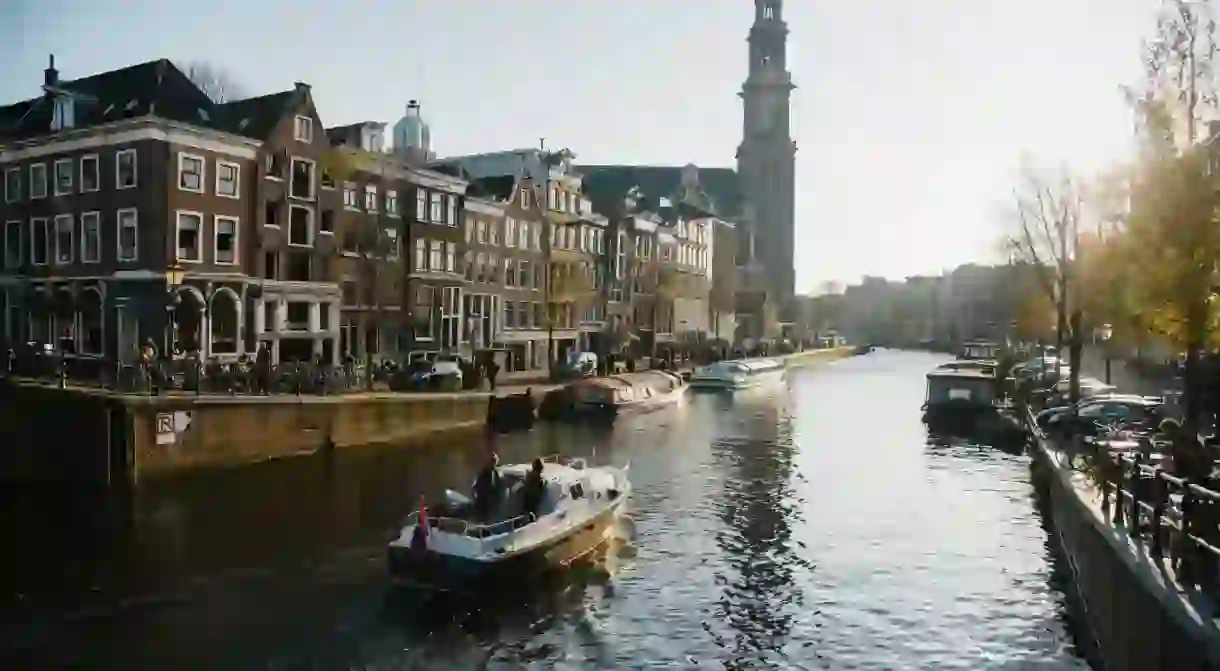The Most Important Historical Sites in Amsterdam

Considering that Amsterdam is almost 1000 years old, it comes as little surprise that the city is teeming with history. This fascinating heritage is represented at several important historical sites inside the city, such as Dam Square, de Oude Kerk, and of course, Amsterdam’s iconic canal belt.
The Portuguese Synagogue
Architectural Landmark

During the 16th century, many Portuguese-Jewish families fled to Amsterdam in order to escape from the Inquisition. In the Netherlands they were allowed to practise their faith relatively freely and eventually constructed an enormous synagogue on the outskirts of central Amsterdam. Today, this monumental building is known as the Portuguese Synagogue and remains an important part of Amsterdam’s Jewish community.
Homomonument
Architectural Landmark
Based around the pink triangle that gay individuals were forced to wear in Nazi concentration camps, the Homomument commemorates the queer victims of the holocaust, while paying tribute to the ongoing and historical struggles faced by the LGBTQ+ people. It was actually the first ever memorial of its kind, and inspired many other similar monuments in cities around the world.
De Oude Kerk
Architectural Landmark

As Amsterdam’s oldest, surviving building, de Oude Kerk has witnessed a huge portion of the city’s history. The church dates back to 1306 and was originally owned by the Catholic faith. However, during, the Reformation Calvinists seized de Oude Kerk and converted it into a Protestant cathedral. Today, the church is surrounded by the Red Light District and its outer courtyard features two monuments that are dedicated to the city’s sex workers.
Nieuwmarkt
Architectural Landmark

De Waag on Nieuwmarkt is the oldest secular building in Amsterdam and was originally part of the city’s outer fortifications. In 1617, de Waag was repurposed into a weigh house where goods were measured according to Dutch standards before being traded. During the 1970s huge riots broke up on Nieuwmarkt, in response to the municipalities plan to demolish large parts of the neighbourhood to make way for a new metro line.
Rembrandt House Museum
Architectural Landmark
Dutch master painter Rembrandt van der Rijn spend almost 20 years living and working within Amsterdam’s Jewish Quarter at a house on Jodenbreestraat. Rembrandt created many of his most famous paintings during this period including his most iconic work, the Night Watch. In 1911 Rembrandt’s former home was converted into a biographical museum.
Dam Square
Architectural Landmark

In the 13th century a large dam was constructed on the mouth of the river Amstel. This impressive feat of engineering effectively united several settlements on either side of the river, which were eventually renamed under the singular title Amsterdam. Today this historical site is known as Dam Square and contains many important iconic buildings including the Narional Monument, the Royal Palace and the Neiuwe Kerk.
Want to see the best of Amsterdam? Check out this list of tours for the best experiences in Amsterdam!















